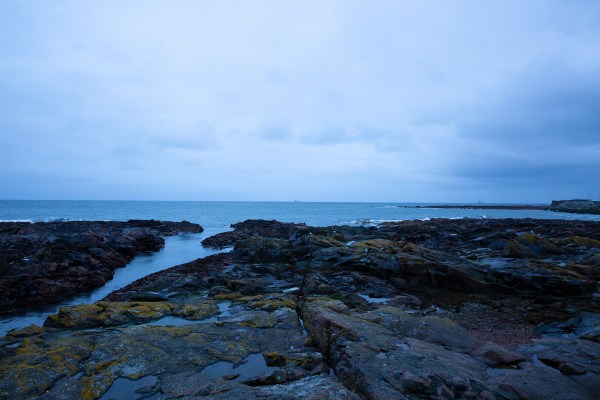The fishing market globally was worth $253 billion in 2021, and despite the controversy that swirls around the industry, that figure continues to grow. Today a startup that has built a platform to make the business of fishing more efficient — and thus the process overall more traceable and less prone to waste — is announcing a round of funding to ride on that wave. Rooser, which provides a marketplace for sourcing fish aimed both at those fishing and those buying for wholesale, trade or retail, has raised $23 million — funding that it will be using both to expand into more markets, and to continue building more functionality into its platform.
Today the company’s focus is on stock management, providing tools to help suppliers manage this, as well as to handle and track sales and assess the wider marketplace for their products. Soon, the plan will be to incorporate more quality control tools, supply chain finance, personalization for buyers and sellers to connect more likely trades; and further down the line, the startup will also bring more business intelligence and analytics into the mix for its customers.
Index Ventures is leading this round, with participation also from GV (formerly Google Ventures) and Point Nine Capital, as well as Figma CEO and co-founder Dylan Field, and David Nothacker, co-founder and CEO of freight and cargo startup Sennder,
The crux of the problem that Rooser is aiming to fix is that fishing is a huge and growing industry, but it’s been built on the back of major inefficiencies — inefficiencies that have time and again proven to be disastrous for more than just businesses, but for wider economic and ecological ecosystems.
Joel Watt — the CEO who co-founded the company with chief commercial officer Nicolas Desormeaux, COO Erez Mathan, and CTO Thomas Quiroga — saw this situation firsthand when he was running his own fishing business.
Originally an accountant by training, Watt hails from the north of Scotland (with an accent my American ear sometimes found hard to penetrate to match), and after years working for a big firm, he returned to his roots and hometown to start a fishing business — not a tech-based marketplace and budding big-data analytics play, but an actual, wet-floors, cold-rooms, and yellow boots fishing operation following in his family’s footsteps, with both his father and grandfather having also worked in fishing.
In nearly 10 years of operations, he scaled that business to 50 people and £10 million in turnover, “and it was then that we started to see just how inefficient it was,” he said. Fishing business’s greatest problem, he said, is uncertainty.
“You have the boats and fisheries, those turning the products into things you can eat, wholesalers and distributors, and then restaurants and fishmongers. All of those need one-to-one communication, but there are in reality many actors and many price points,” he said. The market is massive — 140,000 related business entities just in Europe — but typically those working without leaning on any platform to access wider customer bases and manage those relationships can only handle 20 contracts at a time, no matter how much fish they have to sell.
On the subject of fish to sell, that too is an issue. There are 250 types of fish typically sold in the fishing trade, but when you add in the range of sizes and other variables, it comes out to what Watt said was 35,000 SKUs, and there is little consistency in pricing across that landscape. “No one knows how much anything costs.”
Add to that the many layers of people in the chain, and stages that they each manage, and the delays that brings into what is a highly perishable product, and you have a messy situation. For every two fish or other seafood items pulled out from the water, only one gets eaten.
So Watt did what any accountant who pivots into building and running a fishing business might do: he started to look into software that could help manage the business aspects of his operation. Rooser is a word from the Doric dialect used in Watt’s region of Scotland, and it means “watering can.”
“A team member in my fishing business made a comment about how we seemed to always be fighting a fire somewhere,” Watt said. The idea is that Rooser the software is now helping to fight those fires. Indeed, that software, called Sea.Store, was effective and others started asking to use it, too.
Buyers on the platform can source seafood from 13 different countries, although Iceland, Watt said, is the biggest sourcing country at the moment. As for buyers, France currently accounts for 95% of all sales.
France indeed is a very big market for seafood, but it’s not the only one. Boosting it as the main buyer was intentional on Rooser’s part, he said.
“We wanted to get fit in one market and then develop a supply side,” he said. “Now we can easily move into other countries as we spread across Europe.”
Georgia Stevenson, the Index partner who led the investment, said that part of the interest for Index here was how successful Rooser has been so far in addressing this particular vertical’s needs and building a marketplace to match that.
“It’s enabling less wastage, but it’s also just empowering seafood traders to do their jobs better,” she said. And while there have been plenty of critics lambasting the fishing industry for overreaching in their activities, depleting stocks; and equally the industry itself seems to just get increasingly bureaucratic, Stevenson said she believed that Rooser addressed both of these issues. “We have been investing in categories and infrastructure to be more sustainable and we see Rooser as consistent with that.”
